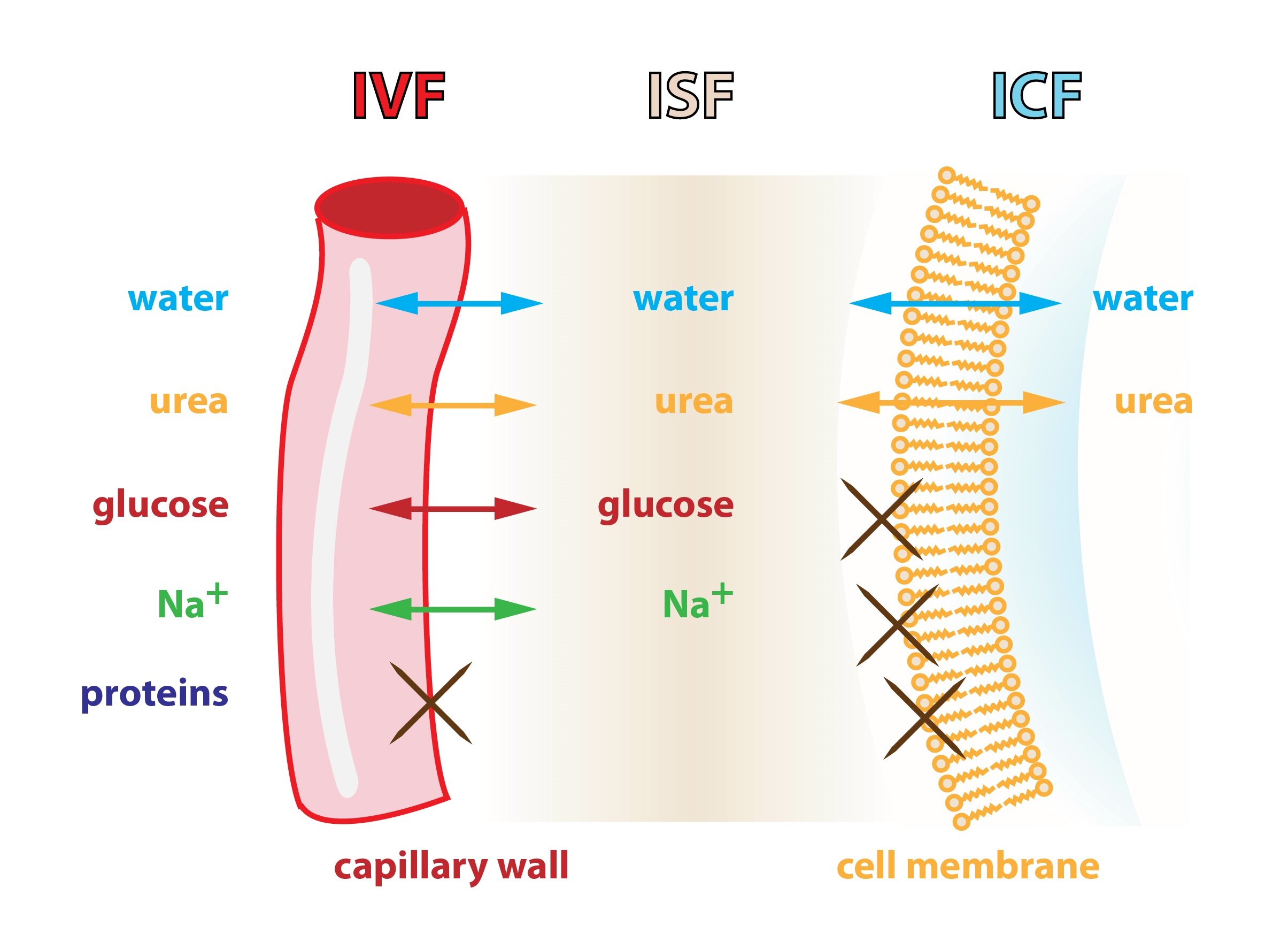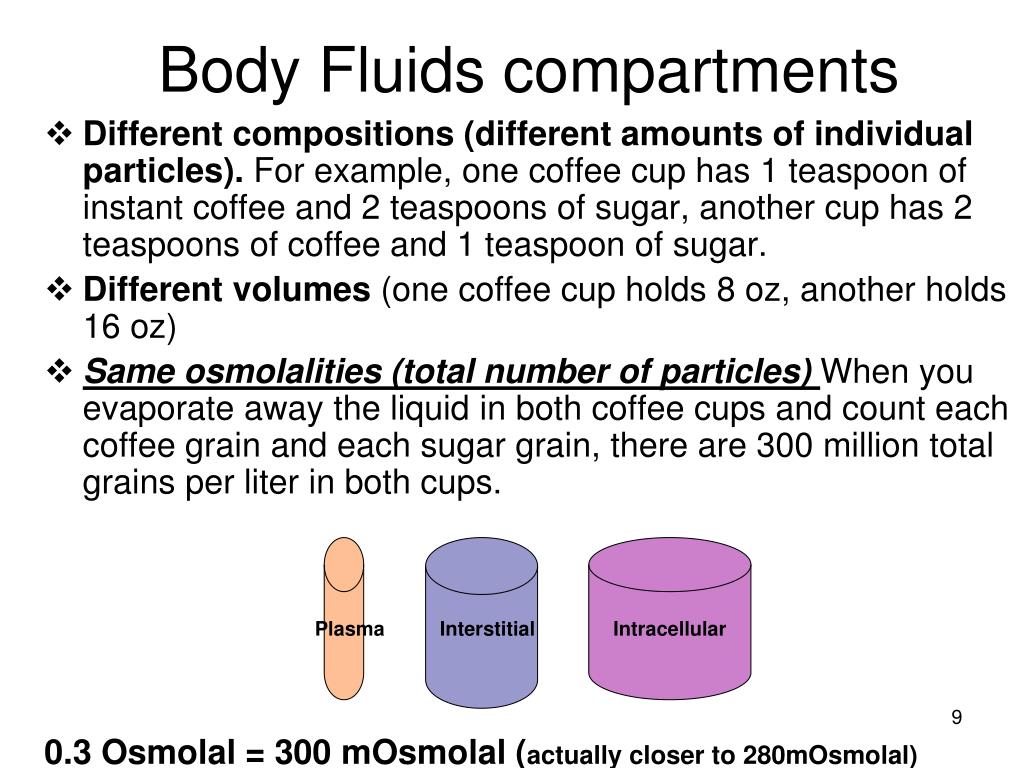

The latter can be further subdivided into the intravascular fluid compartment or plasma (7.5% of total body water), the rapidly equilibrating interstitial fluid and lymph (20%), and some smaller compartments (the slowly equilibrating interstitial fluid of dense connective tissue and cartilage, the inaccessible interstitial fluid in the bones, and the transcellular fluid, which is produced by the secretory cells). The fluid compartments of the human body include the intracellular fluid, accounting for 55% of total body water, and the extracellular fluid compartment. 6 Distribution of Water in Body Fluid Compartments 5 This linkage to ionic movements is less essential to the large intestine, where absorption of even distilled water may occur. Specifically, absorption of water is linked primarily to the movement of sodium ions, whereas secretion is linked to the movement of chloride ions. 4 Water movement in the gastrointestinal tract is regulated by osmotic gradients and is linked to ionic movements. Instead, the greater part of absorbed water is transferred through channel systems, such as the aquaporins. 3 Although water may diffuse to some extent through cellular membranes, the hydrophobic properties of their lipid bilayer do not allow the degree of absorption required.

From a total of approximately 8 L, about 6.5 L is absorbed through the small intestine, whereas the absorptive function of the large intestine is limited to about 1.3 L. 2 However, most of the water entering the intestine is absorbed in the small intestine. Specifically, the large intestine has a greater capacity to absorb a hypotonic solution compared with the jejunum or the ileum, whereas a negative net water flux is observed in the duodenum in the presence of a hypotonic solution. Experiments in canine intestinal segments have shown that the potential for water absorption differs among the various parts of the intestine. Water movement across the intestinal epithelium may occur paracellularly through the tight junctions and transcellularly through cell membranes. In fact, there is equilibrium between intestinal water secretion (through the pancreatic juices, bile, gastric secretion, and saliva) and water absorption that should be maintained within narrow limits, because disturbances in this equilibrium result in diarrhea or constipation. Water movement through the gastrointestinal wall has great significance, not only for the delivery of ingested fluids but also for the digestion of other nutrients and as a defense from pathogens. The high specific heat of water, in relation to other substances, makes it capable of absorbing or losing heat without a large temperature change, thus protecting living cells from massive temperature changes that could cause cell impairment or even death. It is also a master of weak intermolecular interactions, such as hydrogen bonds, necessary for the protein binding in their substrates, and hydrophobic reactions, necessary for protein structure. 1 It is an excellent solvent for ions, required for nerve signaling, enzyme activity, mineralization of organic compounds, and the properties of DNA.

Water has many properties that seem indispensable for the functioning of cells.

Although some alternative theories have been suggested for the generation of life in nonaqueous environments, virtually all known living systems depend on water for survival. Life on earth has evolved as a consequence of the presence of water.


 0 kommentar(er)
0 kommentar(er)
